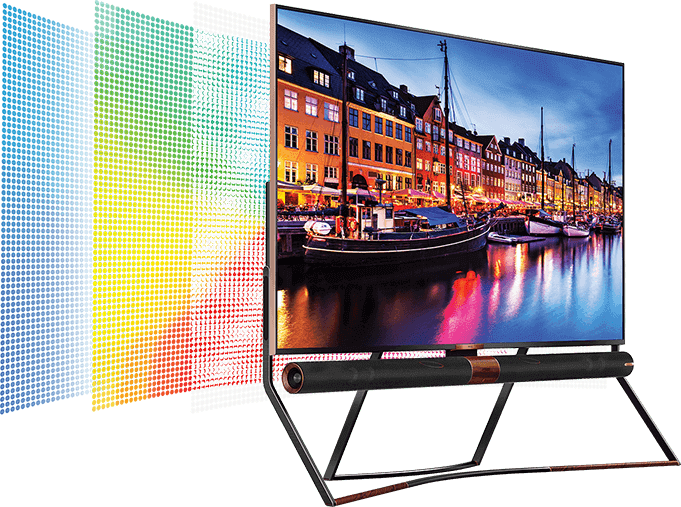QLED vs OLED – How to spot the difference!
Despite there only being a one letter difference, the viewing experience between the two could not be more polar. Let us break down the difference for you.
What is QLED TV?
QLED TV uses the technology of quantum dots which produce pure colour by transferring LED light through quantum dot colour filters.
QLED Technology Explained
The quantum dots provide a layer over the backlight which emits pure primary colours. This delivers improved brightness and produces deeper colours by limiting the loss of light and provides sharper viewing angles by absorbing any extra surrounding light.

QLED produces a higher peak brightness from 800-2000 nits (a unit of visible light intensity). The benefit of this is a superior colour accuracy providing an increase in brightness levels as well as providing sharper and more vivid colours.
Benefits of QLED
- No burn in
- Faster refresh rates
- Deep colour at high peak luminance
- Wide viewing angle
- Low cost
- Manufactured using LED infrastructure
What is OLED TV?
OLED technology draws on organic LED as its light source to produce colour.
OLED Technology Explained
OLED technology creates images by using self-lighting pixels. As opposed to a QLED TV, OLEDs have no backlight. The picture is produced from switching pixels on and off individually. This allows the purest of black colours to be displayed. This then produces the backdrop for compromised contrasts as the black mixes with the other RGB colour range.
Benefits of OLED
- Deep black levels
- Excellent viewing angles
- Fast refresh rate
- Can potentially be manufactured from flexible substrates (special glass used for ultra film transistor LCDs)
Different kinds of TVs produce a different kind of colour display. QLED TV operates through pure RGB (red blue green) quantum dot technology. Every dot produces colour individually giving them lifelike clarity and display.
OLED TVs produce WOLED colour. This is when the white colour is introduced to the gamut. Basically, the black pixels are introduced to the white, red, blue and green pixels. The colour produced isn’t quite as sharp.